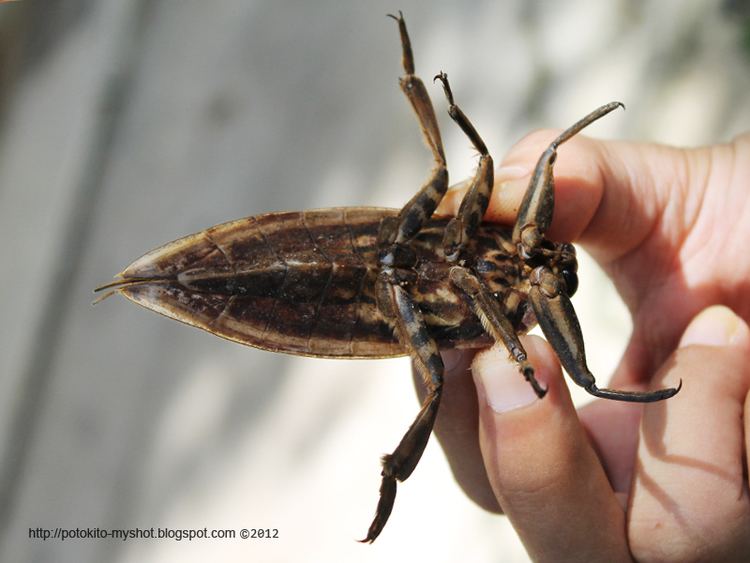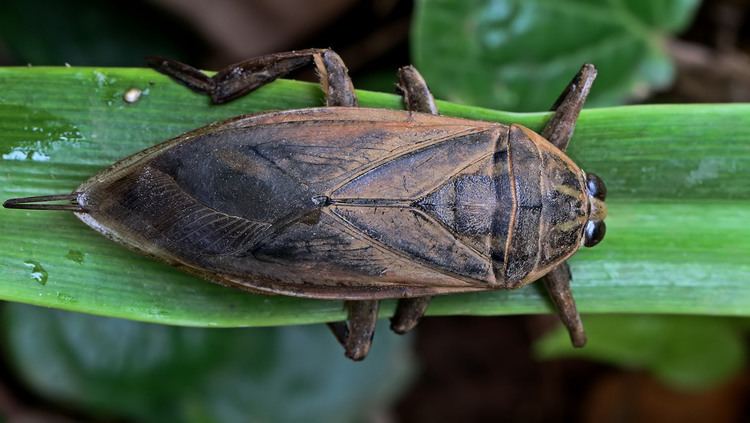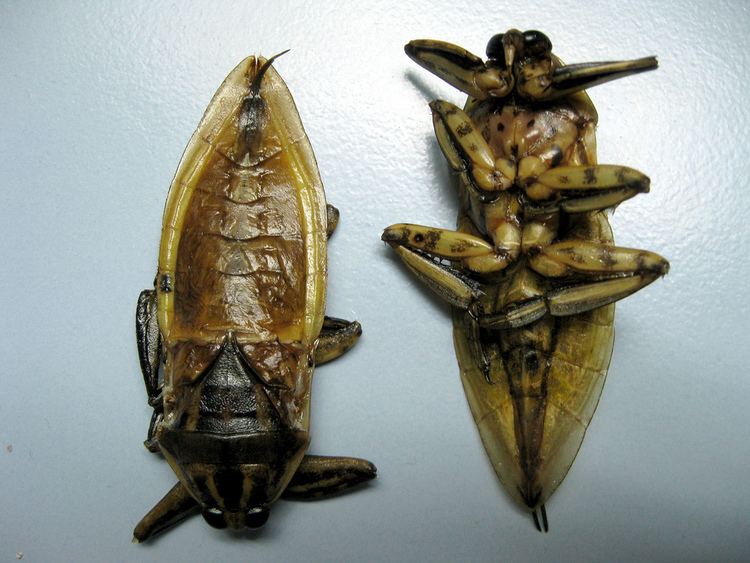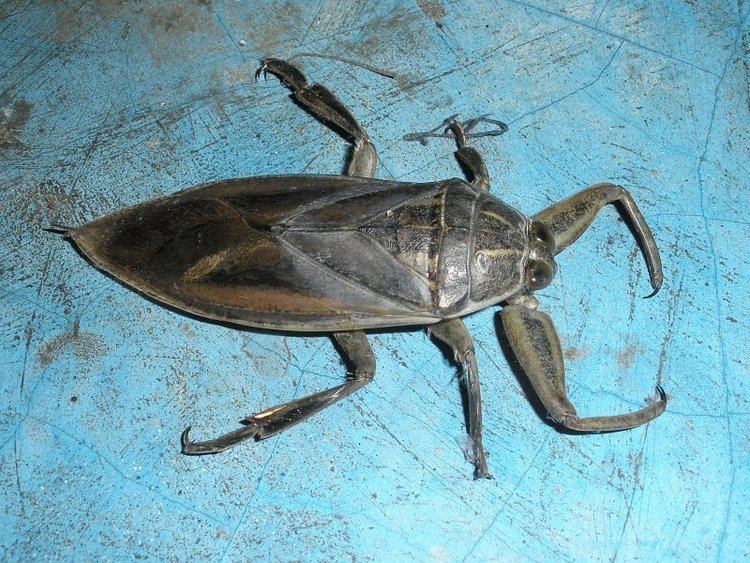Higher classification Lethocerus | Scientific name Lethocerus indicus Rank Species | |
 | ||
Similar Lethocerus, Insect, Giant water bugs, True bugs, Vietnamese coriander | ||
Lethocerus indicus giant water bug 1
Lethocerus indicus is a giant water bug in the family Belostomatidae, native to South and Southeast Asia, as well as southeast China, Korea, the Ryukyu Islands and New Guinea. It was originally described as Belostoma indicum but is no longer placed in that genus.
Contents
- Lethocerus indicus giant water bug 1
- Lethocerus indicus 2
- Description
- Research
- Vietnam
- Thailand
- Philippines
- References

This insect is well known as an edible species in a number of different Southeast Asian cuisines. The taste of the flight muscles is often compared to sweet scallops or shrimp.

Lethocerus indicus 2
Description
Lethocerus indicus typically has a length between 6.5 and 8 cm (2.6 and 3.1 in).
Research

The large size of this insect and its flight muscles and the ease of dissection makes it an excellent model organism for muscle structure with special features pertinent to the cardiac muscle. The high degree of structural order makes is possible to obtain X-ray diffraction patterns richer and more detailed than those from vertebrate striated muscle.
Vietnam

The Vietnamese call this insect cà cuống. The insect's essence (a pheromone produced by the male that attracts females) is harvested by collecting its liquid-producing sacs. That liquid is then placed in small glass containers. The insect is claimed to be scarce, and demand for the extract is high. Most of the cà cuống essence on the market is therefore imitation, with the actual essence fetching a high price. Cà cuống is typically used sparsely and eaten with bánh cuốn (rice noodle rolls) by adding a drop to the nước chấm (dipping sauce).

It is also eaten in a soup dish called 'bún thang' adding a unique essence to the broth. The dish traditionally includes rice noodles, thinly sliced egg crepe, pork cold cuts, and other various additions in a chicken/dry squid broth. A tiny drop of the extract on the tip of a toothpick would suffice to flavor the whole bowl of soup. This dish originated in Northern Vietnam.
Thailand

In the northeast region of Thailand, eating insects is common. This species (known as malaeng da na or maeng da; Thai: แมลงดานา or Thai: แมงดา) is a popular dish, eaten whole and fried, and as an extract. Maeng da is used to make nam phrik Maeng Da, a type of chili sauce used as a condiment.
Philippines
In the Ilocos region in the northern part (Luzon) of the Philippines some insects such as crickets, locusts, and beetles are traditionally eaten. The water bug or water beetle is known as alukap in Ilokano language. It is sauteed or fried in oil, garlic, onions and tomatoes, or roasted, after the wings and legs have been removed, and eaten as a viand for steamed rice or as a finger food with liquor. The same is done in the Visayas region where it is called obus in the Visayan language.
